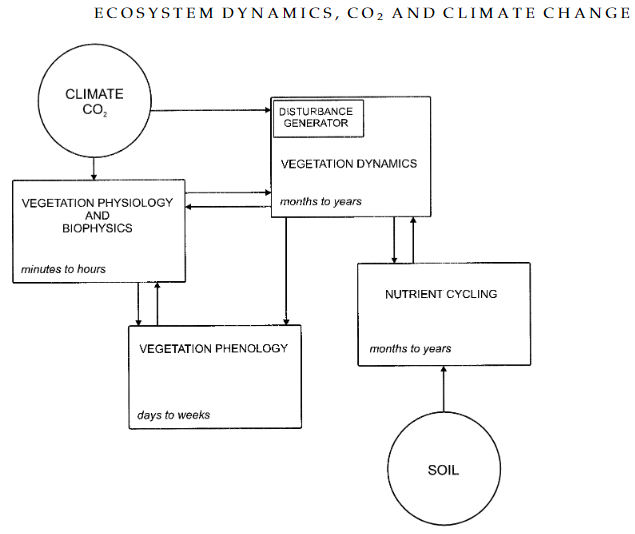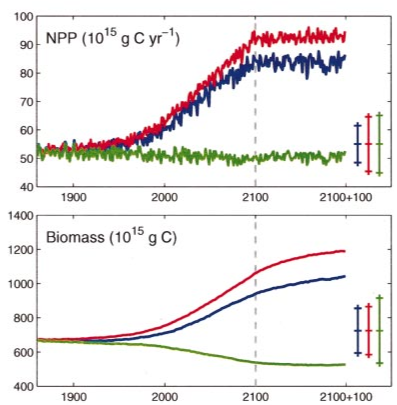This is just a “thinking out loud” thread. No need to reply.
Question. Can the global vegetation results from NASA’s Terra satellite be fed into Global Climate Model software? Has this already been done? What is the result if it is done?
Starting point https://sci-hub.tw/https://onlinelibrary.wiley.com/doi/pdf/10.1046/j.1365-2486.2001.00383.x
“Global response of terrestrial ecosystem structure and function to CO2 and climate change: results from six dynamic global vegetation models”, Cramer et al., 2001.
I know, it’s a long time ago, but it does at least consider a range of different vegetation responses to atmospheric CO2, so may include one or more that matches the Terra satellite data.

“Canopy phenology includes the seasonal timing of budburst, senescence and leaf abscission in response to temperature and/or drought. Vegetation dynamics are based on annual net primary production and biomass growth; they include competition among plant functional types, probabilities of natural disturbance (fire, general mortality) and succession (replacement of plant functional types over time) following disturbance.”
Damn acronyms,
NPP is Net Primary Productivity, I know that.
NEP is net ecosystem production. Is that the growth rate of biomass?
ptf = ?
The six supposedly different vegetation models aren’t all that different. Photosynthesis is based on Farquhar (1980) and Collatz (1992) (5 of 6 models) or “empirical” (1 of 6 models).
So essentially there are only 2 photosynthesis models, one of which, being empirical, is probably unobtainable. The other is old. Results are these.

You only need to take account of the dark blue line here, the other two lines are nobbled models with various components removed. NPP is Net Primary Productivity, the rate of growth of natural forests.
Clearly, increased atmospheric CO2 is predicted to be good for forests. We’re talking about anthropogenic CO2 giving a 50% increase in natural forest biomass in the long term.
But is that prediction good enough? From the Terra satellite we know that NPP has increased faster than these predictions.
The references are:
Farquhar (1980) A biochemical model of photosynthetic CO2 assimilation in leaves of C3 species.Planta,149,78-90.
Collatz (1992) A coupled photosynthesis – stomatal conductance model for leaves of C4 plants. Australian Journal of Plant Physiology, 19, 519-538.
Since C3 plants make up 95% of Earth’s plant biomass (according to wikipedia), and include all trees, most shrubs and some grasses, it looks as though the core calculations of environmental impacts from (almost) all Climate Modelling software reside in a single thirty-eight year old paper. Clearly, that paper is worth looking up.
https://www.researchgate.net/profile/Graham_Farquhar/publication/259201703_A_biochemical_model_of_photosynthetic_CO/links/02e7e516c5ca5adcb7000000.pdf
(Side note. It may be important to find out if bamboo is a C3 plant. Bamboo is the dominant species in some forests, and being a fast-growing grass may or may not be a C3).